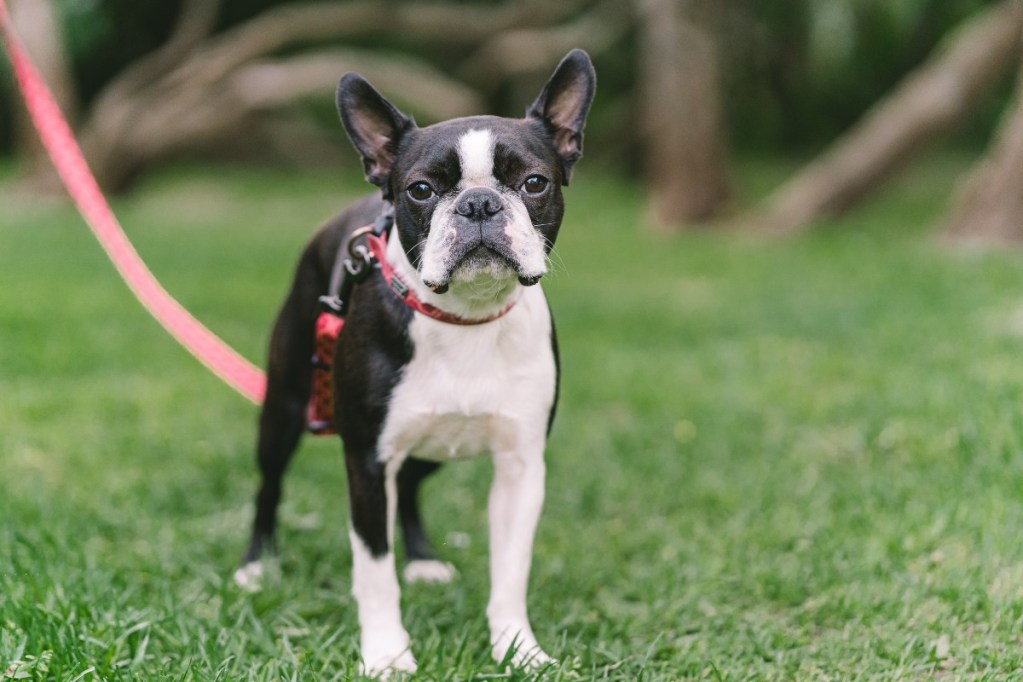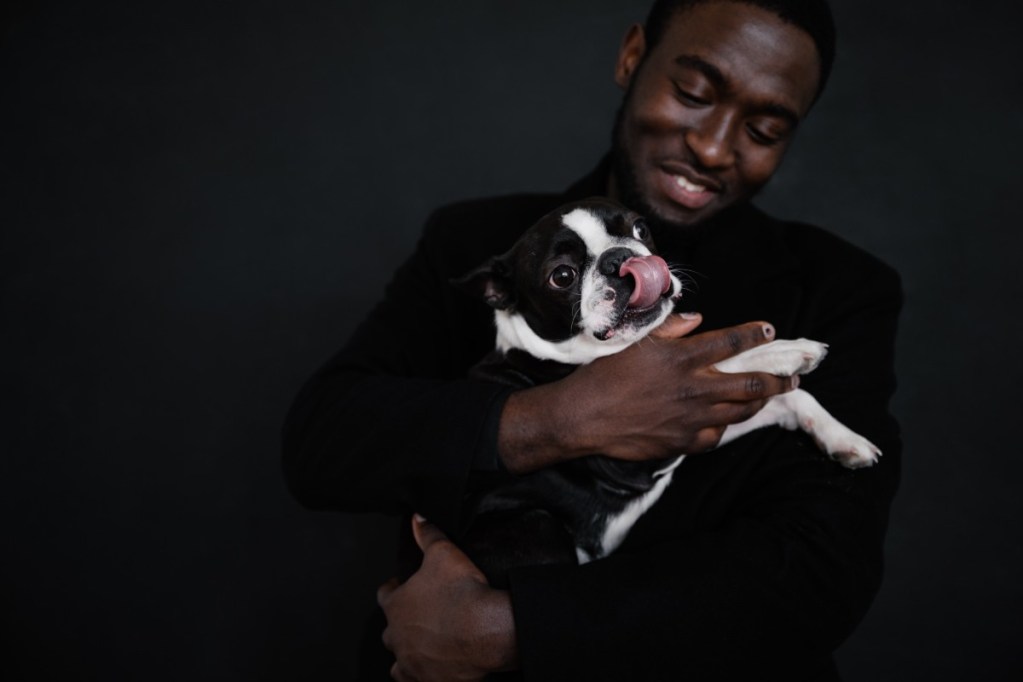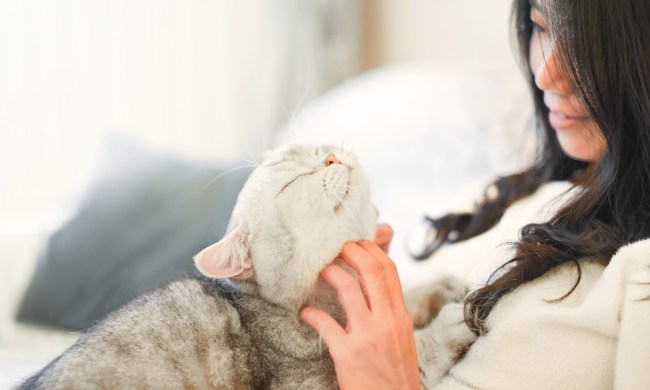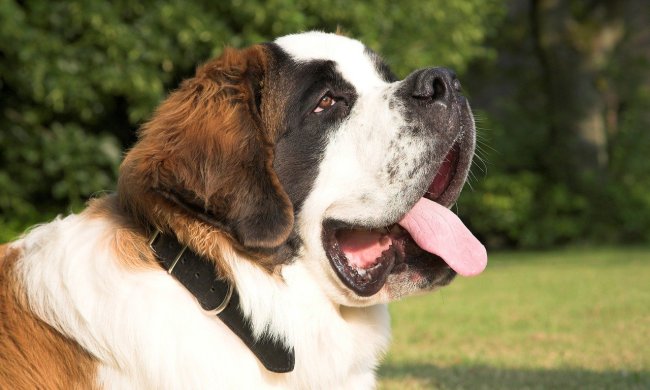Boston terriers are always dressed for a black-tie affair. The breed’s tuxedo coat is one of many features that have endeared. Their short muzzles, compact bodies, and oversized eyes make this terrier breed absolutely adorable. Come winter, you can find Bostons strutting their stuff in cute sweaters to keep them warm underneath their short coats.
Of course, looks aren’t everything. Boston terriers are also known for their curious and loving personalities, among other common traits. Though no two dogs are exactly alike — even ones in the same breed or litter — understanding common breed characteristics is a great launching point to researching what pup is best for your home and lifestyle. If a Boston terrier is on your list, look no further. We dog up the details on this lovable breed.

Boston terrier facts: History, personality, needs, and more
Are Boston terriers really from Boston?
Sort of. The Boston Terrier Club of America notes that the original Boston terriers have strong ties to Beantown. Judge, a male English bulldog and a white English terrier mix who likely came from England, belonged to Bostonian Robert C. Hooper. Judge was bred to Gyp (or Kate), a female pup owned by Edward Burnett of Southborough, Massachusetts. The pairing was the start of the Boston terrier breed.
Are Bostons playful?
Playing is one of the Boston terrier’s favorite pastimes. The breed is always up for a romp in the backyard. Boston terriers frequently become the mayors of their local dog parks, and they’re even game for playing with young children. Keep an eye on your Boston if they get very energetic or it’s hot out. Their short muzzles can make it harder for them to breathe. If you notice respiratory problems, take them aside for a cuddle session — Bostons are highly affectionate.
How friendly is a Boston terrier?
Boston terriers are also known as the “American Gentlemen.” Of course, any gender of Boston terrier is known for being kind, dignified, adaptable, and extremely loving. Boston terriers are very open to strangers and don’t bark. They also make great first pets for families with small children and usually become fast friends with other animals in the home. These high-energy dogs are not shy — expect fast-wagging tails, wet kisses, and an always-full lap (and heart).
Is it easy to train a Boston terrier?
Training takes effort no matter what breed of dog you get, and it requires a commitment from human companions. Boston terriers are relatively easy to please and mostly adaptable, making them great candidates to pick up on training quickly. Private and group training sessions may be available in your area and can help your Boston become the best dog they can be. You can also work on training at home. Whether you use a professional or DIY, keep training sessions positive. Focus on rewards like treats, pets, and plenty of praise over scolding and punishment. Training should build confidence and the bond you have with your Boston terrier.
Will I have to take my Boston terrier to the groomer a lot?
Boston terriers may never need to step foot in a groomer’s shop. They’re pretty low maintenance but do require some at-home grooming. Their short, fine coat doesn’t shed much (but it does shed). Brushing it with a soft-bristle brush every couple of days will keep it clean and shiny. Bathe your Boston every two or three months, and clean their ears after any trips in the water to prevent infection. Trim their nails about once per month to avoid issues like ingrown nails, which can be painful and make walking difficult.
Can I have a Boston terrier in an apartment?
Boston terriers do well in cities, making them excellent for apartment dwellers. They don’t bark much, and they don’t require a ton of room to run around in the same way larger, more active breeds may do best in a home with a large backyard. Still, the dog has physical and mental stimulation needs. Walk and play with your Boston often to keep them physically healthy and mentally engaged. Trips to the dog park are great ways to let your Boston have some leash-free fun.
How long does a Boston terrier live?
Life span varies based on the health and lifestyle of a dog, but Boston terriers typically live 11 to 13 years. Common health issues include:
- Breathing troubles
- Eye injuries
- Skin allergies
- Ear infections
- Fleas and ticks
Your vet can help you flag issues and guide you on ways to keep your dog healthy and happy.

Boston terriers vs. other breeds
What’s the difference between a Boston terrier and a French bulldog?
Boston terriers and French bulldogs have similar short muzzles and compact bodies. Some — but not all — French bulldogs may have tuxedo-style coats. Both are affectionate with family and typically do well with young children, other pets, and strangers. Either breed can be a fantastic pet. That said, Bostons are usually 15 to 17 inches tall and no more than 25 pounds. French bulldogs are a bit shorter — 11 to 13 inches — but weigh up to 28 pounds.
What’s the difference between a Boston terrier and a Jack Russell terrier?
Jack Russell terriers have longer stouts, are shorter (10 to 12 inches), and weigh less (9 to 15 pounds) than Boston terriers. Their coats are wiry compared to the fine fur of a Boston. Like Bostons, Jack Russell terriers are usually good with strangers and other animals, but may be a bit wearier of tiny humans. Both breeds are lively and loving.
Boston terriers are kind and affectionate dogs that do well in various environments. They are one of the best breeds for apartment dwellers because they’re small, don’t bark much, and don’t have high physical activity needs. That doesn’t mean they don’t need exercise. Daily walks and play sessions keep them physically and mentally healthy and engaged. The good news: Bostons are social, well-behaved (with training), and adaptable pets. They do well by your feet at a dog-friendly cafe and thrive at dog parks. Keep in mind that these Boston terrier facts are generalizations. Every dog is different. Speak with a reputable breeder or shelter/rescue staff about the specific Boston terrier you’d like to welcome into your home.



